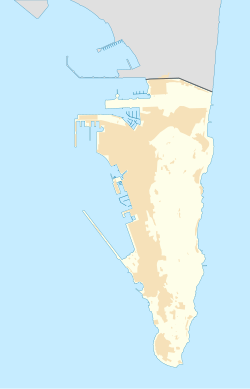| Collin's Cave | |
|---|---|
Map showing location in Gibraltar. | |
| Location | above Catalan Bay |
| Coordinates | 36°08′23″N5°20′35″W / 36.1397°N 5.3431°W |
| Elevation | 420 feet |
| Discovery | late 19th century |
| Geology | limestone |
| Difficulty | inaccessible |
Collin's Cave is a cave in the British Overseas Territory of Gibraltar. It is located in the northeastern part of the Rock, between Reservoir Fissure and Middle Hill Cave. The cave is above Catalan Bay. [1] It is one of the many caves in Gibraltar. It is believed to be archaeologically important and is listed in the government's Heritage and Antiquities Act 2018. [2]
